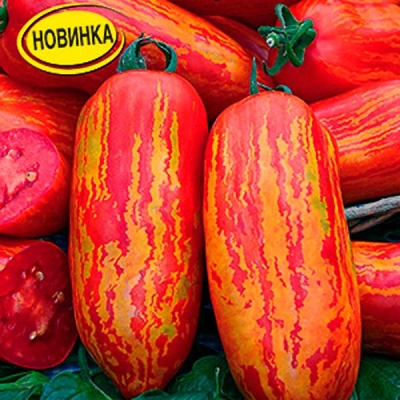
- Authors: Kachainik V.G., Gulkin M.N., Karmanova O.A., Bernotene E.I. (Agrofirma Aelita LLC)
- Year of approval: 2017
- Category: grade
- Growth type: indeterminate
- Appointment: fresh consumption
- Ripening period: mid-season
- Ripening time, days: 110-115
- Growing conditions: for open ground, for film greenhouses
- Transportability: high
- Bush size: tall
Such an unusual name does not mean the desire to somehow "shock the audience" or demonstrate its originality. Sailor is quite a worthy variety. However, as always, only those who thoroughly study the characteristics of the plant can achieve a good result.
Breeding history
The development of the culture was carried out at the breeding facilities of the Aelita agricultural company. The project was managed by breeders Kachainik, Gulkin, Bernotene and Karmanova. Breeding works were successfully carried out in the first half of the 2010s. Officially, the new tomato has become available for amateur summer residents since 2017.
Description of the variety
The sailor develops according to an indeterminate scheme. Therefore, it is mainly cultivated in greenhouses on a garter, and not in the open field. Usually, not glass, but film greenhouses are used. The height of the bushes is 1.7-1.9 m. Moderately long dark green leaves are formed on the branches; tobacco mosaic and fusarium wilting are not terrible for this variety.
The main qualities of the fruit
Basically, the harvested crop is used fresh, without additional processing. When leaving the ovary directly, the tomatoes are colored in a light green tone. As they become ripe, instead of the usual reddening, they will acquire an orange-red color. The dimensions of tomatoes are average, and their average weight reaches 0.12 kg. Other nuances:
- cylindrical shape;
- poorly pronounced ribbing;
- development from a simple inflorescence;
- laying of the first berry over 8 leaves;
- laying of subsequent berries - every 2 leaves.
Taste characteristics
Dense pulp develops inside Matrosik. Her perception is quite favorable. These tomatoes are often used in salads and sandwiches.
Ripening and fruiting
Sailor is a simple mid-season tomato. Under normal conditions, 110 to 115 days pass between sprouting and harvesting. Only in certain cases is the standard schedule violated. Ripe tomatoes can be harvested in August and September.
Yield
Berry picking can reach 9.6-9.9 kg per 1 sq. m. Therefore, the plant is reasonably attributed to the high-yielding group. The weather and agrotechnical components, however, can greatly affect the achieved result.
The timing of planting seedlings and planting in the ground
It is necessary to start sowing seeds in containers from March 1. The usual planting period for seedlings ends on March 15th. The open ground transshipment time is from 15 May to 5 June.

Growing tomato seedlings is an extremely important process, because it largely depends on whether the gardener will be able to harvest at all. All aspects must be taken into account, from seedbed preparation to planting in the ground.
Landing scheme
Mostly plants are placed on the garden bed according to the rule of 600x600 mm. Other options are much less productive for various reasons.

Growing and care
It is absolutely impossible to do without removing the stepsons, without giving certain forms to the bush and without attaching it to the support. Otherwise, the cultivation of this variety does not have any specific features. Watering Matrosik must be strictly at the root or using a drip system. Due to the indeterminate growth of the stem, special attention should be paid to its control. When preparing seedlings, the seeds are buried at 2 their own depths.
A pick is made when 2-3 true leaves are formed. But it's better to make sure that the roots have also taken root. Experienced gardeners can immediately prepare a soil mixture with the necessary substances for seedlings. It is easier and more convenient for beginners to water Matrosik's seedlings with water with the addition of top dressing. As with other tomatoes, the following are important:
- good lighting;
- top dressing in a permanent place at least 2-3 times per season;
- regular watering, but at the same time the exclusion of unreasonably high humidity;
- operative weeding of weeds.




A plant needs different micronutrients at each stage of growth. All fertilizers can be divided into two groups: mineral and organic. Folk remedies are often used: iodine, yeast, bird droppings, eggshells.
It is important to observe the rate and period of feeding. This also applies to folk remedies and organic fertilizers.


Growing regions
The main areas traditionally include:
- Siberia;
- Caucasus;
- Black earth;
- the Volga basin;
- center, north and northwest of the European part;
- Far East;
- Ural lands;
- Volgo-Vyatka region.

























































































